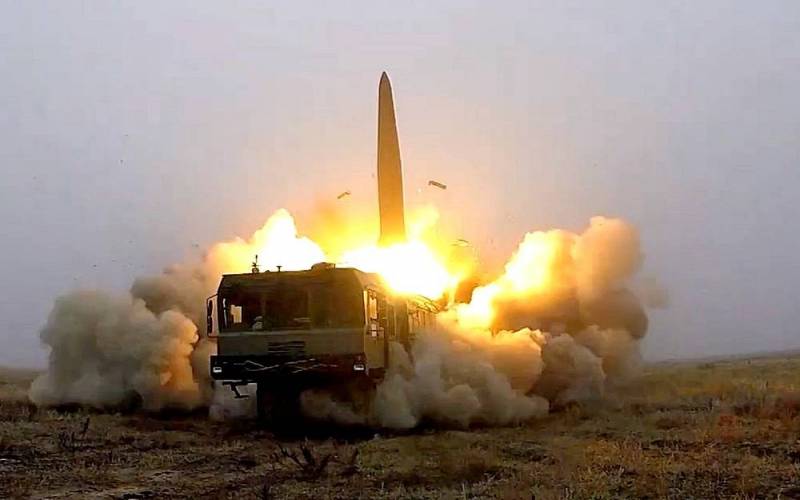The US is not ready to counter Russian tactical nuclear weapons
As Russia has concentrated more than 100 of its troops near the Ukrainian border, and US President Joe Biden promises to help Ukraine in the event of a "Russian invasion", the risk of using nuclear weapons increases, writes the American edition 19FortyFive.
During the Cold War, the most dangerous were ICBMs, strategic bombers and nuclear submarines of the USSR. Today, the biggest threat is posed by RF tactical nuclear munitions of small yield (from 1 to 20 kilotons) and range (about 400 km). Moscow has an arsenal of 3-6 thousand such ammunition. At the same time, Washington simply does not have such a large number of tactical nuclear weapons. Moreover, the defensive doctrine of the Russian Federation provides for the use of such weapons during conflicts.
During the Thunder-2019 and Zapad-2021 exercises, the Russians simulated the use of not only their strategic deterrence forces, but also operational-tactical nuclear weapons. Analysts came to the conclusion that at that time Moscow was practicing not only an intercontinental strike, but also an attack against NATO countries in the European theater of operations.
To understand how effective TNW is, we suggest considering the following scenario as an example
- noted in the article.
The publication believes that the Russians store tactical nuclear weapons in the Kaliningrad region, and the region itself calls it an extremely convenient “bridgehead within NATO” for delivering a limited nuclear strike from it if the Russian Federation loses a non-nuclear war to the Alliance. Therefore, Moscow will without any doubt apply the strategy of "escalation for the sake of de-escalation", forcing the West to retreat after the use of tactical nuclear weapons.
In our scenario, we assume that Russia's goal is to demonstrate determination and take a conventional conflict to the point where NATO and the US capitulate in order to avoid further escalation.
- emphasized in the publication.
The publication suggested that the Russian Federation would launch a 10 kiloton nuclear strike in the countryside in front of the advancing NATO units. At the same time, the explosion will cause minimal harm - it will be a clear signal that Moscow is ready for a full-scale war if the West does not stop.
An explosion of ammunition of the specified power at a height of 180 meters will be a fireball in the air, it will not reach the ground and will not create harmful precipitation. In fact, it will be a "pure detonation" and all fast ionizing radiation (beta and gamma) will dissipate within a radius of 1 km in less than a minute. In this case, intense thermal radiation will dissipate within a radius of 1 km in one second. In this way, NATO troops would not be affected by the impact, and damage and loss of casualties would be kept to a minimum.
According to our analysis, even if this explosion were ground-based, NATO troops would need to be at a distance of more than 1 km to safely move around the irradiated epicenter one day after the explosion. This would result in an unprotected soldier receiving 41 rem of exposure. Given that computed tomography generates 1 rem, the low radiological threat of TNW makes its use more and more realistic.
the authors are sure.
According to the publication, the Russian leadership is convinced that it has an asymmetric advantage due to the extensive arsenal of tactical nuclear weapons. Denying or underestimating a threat will not make it disappear - that's the reality. The Armed Forces of the Russian Federation can and are ready to use tactical nuclear weapons on a limited scale, which is unlikely to lead to a nuclear apocalypse - an atomic war between Moscow and Washington. At the same time, the United States is not ready to confront Russia's tactical nuclear weapons.
If the Russians are questioning the Americans' determination to trade New York for Berlin, how much doubt do they have of our willingness to trade New York for a cow pasture in northeast Poland? From the Russian point of view, American potential is not the issue. It simply doesn't exist. Thus, it is the American will that is under attack.
- summarized in the material.

Information